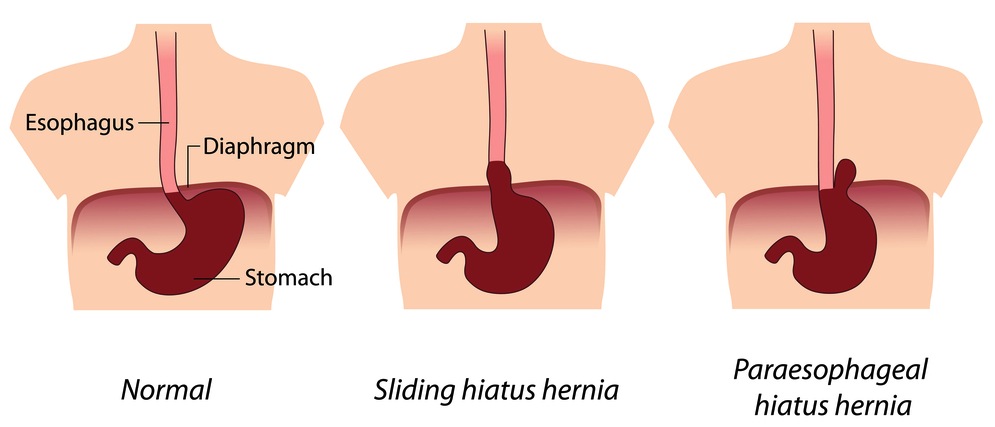Hiatal Hernia
Hiatal hernias are a very common medical problem that occur in people regardless of their body mass index (BMI), however they are more common when the BMI is 35 or higher. A hiatal hernia is an opening between the left and right diaphragm as the esophagus transitions into the stomach. The size of the opening may vary from very small to very large. When the opening is very large other organs such as the stomach or colon may move through the space creating a paraesophageal hernia. As the size of the hiatal hernia varies so do the symptoms associated with them. They can be completely asymptomatic, and be discovered as an incidental finding when a test is ordered for another reason, or symptoms can be severe with refractory heartburn and difficulty eating. Usually, most folks have symptoms somewhere in between,such as mild acid indigestion and heartburn that can be managed with medication. In these instances, nothing further surgically needs to be done.
However, when symptoms are more significant or are associated with morbid obesity disease sometimes further testing is indicated. These test are usually consist of an esophagogastrodudenoscopy (EGD) and an upper gastrointestinal series (UGI).
The EGD involves light sedation in a monitored setting. The surgeon or GI doctor inserts a lubricated endoscope which passes down into your esophagus and stomach for direct examination and biopsy if indicated. The procedure usually takes about 10-15 minutes and is performed as an outpatient basis.
The upper GI is a radiologic study that involves drinking a 3-4 ounces of liquid and a series of X-rays being taken to assess for the hernia size, location and associated reflux, strictures or other anatomical abnormalities.
At Sebastian River Medical Center, both Dr. Domkowski and Dr. Radecke specialize in laparoscopic repair of both simple and complex hiatal hernias. The nagging symptoms of reflux and difficulty eating can be easily repaired through minially invasive surgery. In addition, people are also often able to come off of their medications for heartburn and acid reflux such as protonix or omperazole.
If this hernia is associated with morbid obesity disease, then it is repaired at the time of the bariatric surgery. However, repair may also be warranted even when not associated with morbid obesity or bariatric surgery.
After surgery, you are usually in the hospital 1-2 days and your able to return to work after 2 weeks. Your surgeon may also put you on a soft diet for a short interval following the surgery. This will be discussed with your surgeon in greater detail at the time of your preoperative visit.

